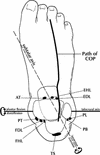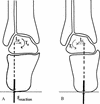Commentary: Functional Ankle Instability Revisited
- PMID: 12937576
- PMCID: PMC164386
Commentary: Functional Ankle Instability Revisited
Figures




References
-
- Mann R A. Surgical implications of biomechanics of the foot and ankle. Clin Orthop. 1980;146:111–118. - PubMed
-
- Inman V T. Williams & Wilkins; Baltimore, MD: 1976. The Joints of the Ankle.
-
- Gauffin H. Linköping University; Linköping, Sweden: 1991. Knee and Ankle Kinesiology and Joint Instability [master's thesis]
-
- Freeman M A, Dean M R, Hanham I W. The etiology and prevention of functional instability of the foot. J Bone Joint Surg Br. 1965;47:678–685. - PubMed
-
- Feuerbach J W, Grabiner M D, Koh T J, Weiker G G. Effect of an ankle orthosis and ankle ligament anesthesia on ankle joint proprioception. Am J Sports Med. 1994;22:223–229. - PubMed
LinkOut - more resources
Full Text Sources
Medical
